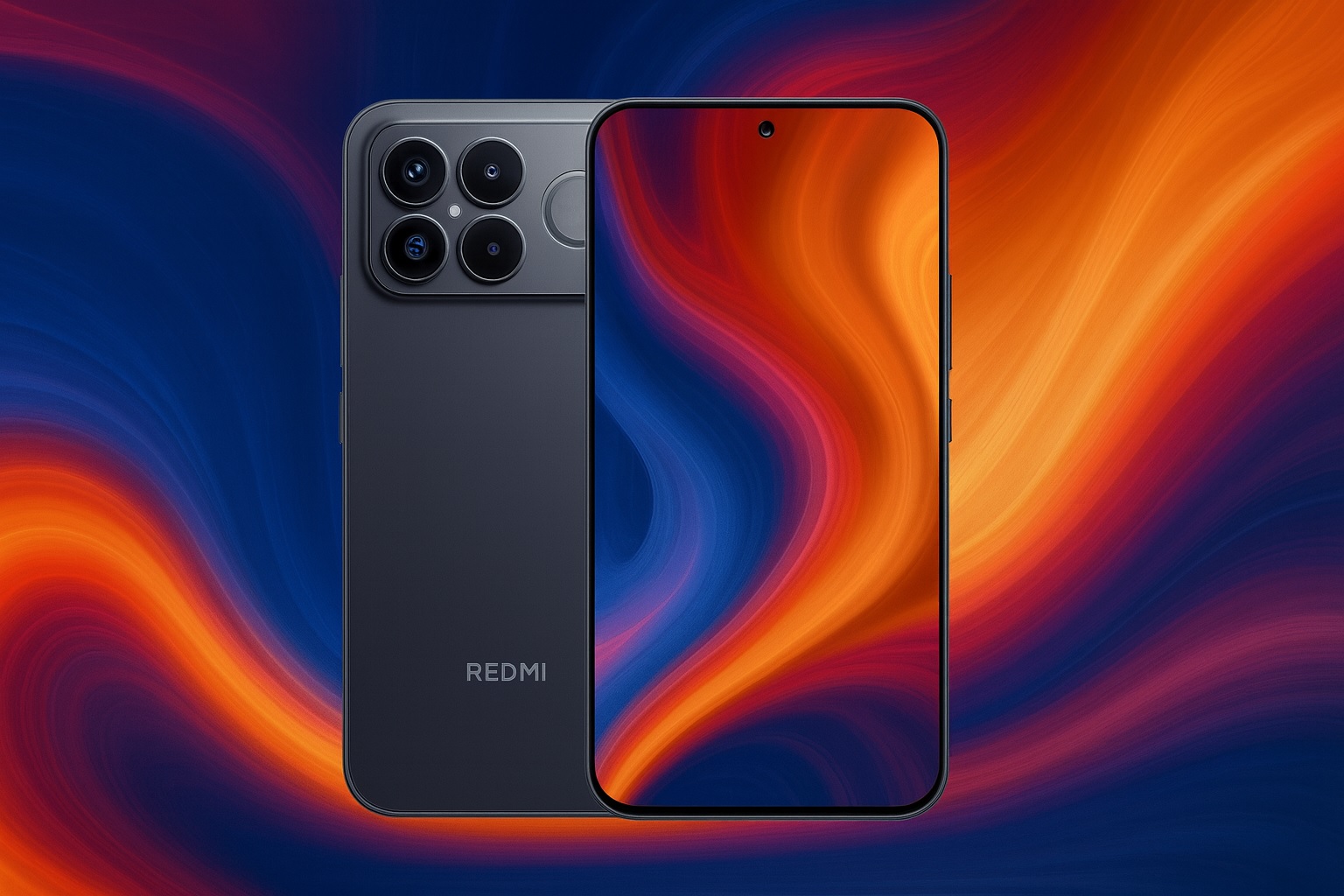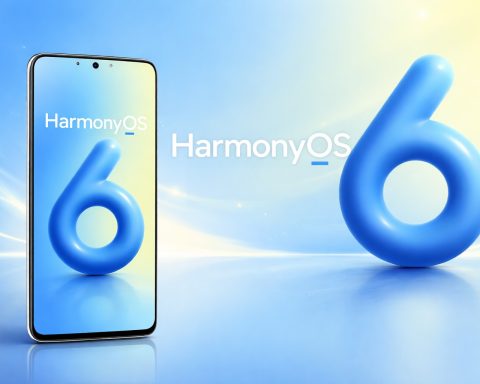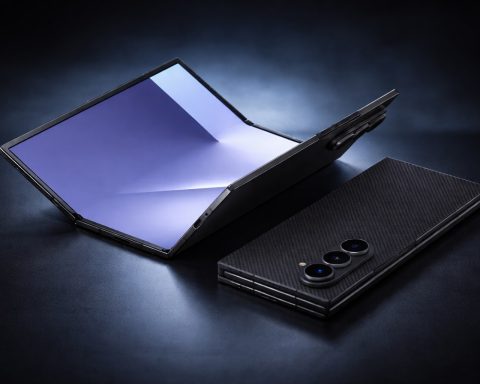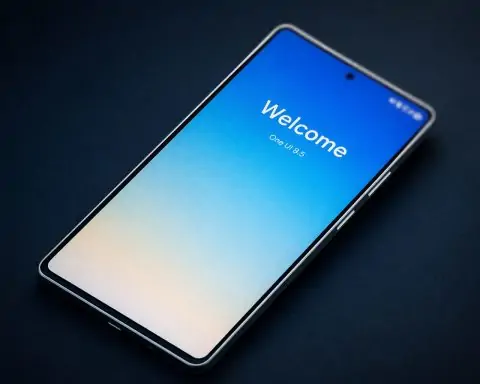- Xiaomi’s Redmi K90 series debuted on Oct. 23, 2025 in China. The base K90 starts at ¥2,599 (~$361) and the flagship K90 Pro Max at ¥3,999 (~$555) [1]. A special “Champion” edition (Lamborghini-branded, 16GB+1TB) costs ¥5,499 (~$764) [2].
- The K90 Pro Max is packed with high-end hardware: a 6.9″ 2K AMOLED display (120 Hz, up to 3,500 nits), Qualcomm’s new Snapdragon 8 Elite Gen 5 chipset, and a massive 7,560 mAh silicon-carbon battery [3] [4]. It supports ultra-fast charging (100 W wired, 50 W wireless and even 22.5 W reverse) [5].
- For imaging and audio, the phone has triple 50 MP rear cameras – a 1/1.31″ Light Fusion 950 main sensor, 50 MP ultra-wide and a 50 MP 5× periscope telephoto (Redmi’s first 5× zoom) [6] – and a Bose-tuned 2.1-channel stereo speaker setup (two ultra-linear drivers plus a woofer) [7] [8]. It offers premium extras like IP68 water resistance and even a denim-textured blue finish.
- Despite these flagship features, pricing is aggressive. The K90 Pro Max starts at ¥3,999 (~$561) for 12GB/256GB and rises to ¥5,299 (~$744) for 16GB/1TB [9]. Android Authority notes that all these “heavyweight specs” come “well under $600” [10]. (Imported Chinese units are already listed at ~$699–$949 [11].)
- Memory chip costs are driving the price debate. Xiaomi President Lu Weibing warned on Weibo that “rising costs of memory chips are far beyond expectations” [12]. He noted the new K90’s base (12+256GB) price was higher than last year’s K80 (¥2,599 vs ¥2,499), and said Xiaomi will temporarily cut ¥300 off the popular 12+512GB K90 model after customer pushback [13].
- Industry analysts say this reflects a global memory crunch. Reuters reports DRAM prices nearly tripled year-over-year as chipmakers shift capacity to AI chips [14]. “Within the last month or two, there’s been a huge demand surge,” says Tobey Gonnerman of Fusion Worldwide [15], with clients “scrambling” and even placing “double/triple orders” for memory. TechInsights’ Dan Hutcheson adds that “so much money [is] floating around, driving demand” [16].
- The K90 Pro Max will roll out globally (likely rebadged as the Poco F8 Ultra). Retailers already offer imports at ~$699–$949 [17]. Xiaomi aims for this model to rival pricier flagships by packing flagship hardware at a midrange tag, even as it manages higher component costs.
Launch and Pricing
Xiaomi’s Redmi brand revealed the K90 lineup at a livestreamed event in China on Oct. 23, 2025 [18]. The standard Redmi K90 (a mid-size 6.59″ phone) starts at ¥2,599 (~$361) for 12 GB RAM + 256 GB storage [19] – replacing last year’s K80 (which started at ¥2,499) [20]. The high-end Redmi K90 Pro Max (a larger 6.9″ model) starts at ¥3,999 (~$555) for 12/256 GB, with higher tiers up to 16 GB/1 TB at ¥5,299 (~$744) [21]. Xiaomi also introduced an exclusive “Champion Edition” of the Pro Max (Lamborghini Squadra Corse branding) at ¥5,499 (~$764) [22].
Android Authority praises the Pro Max as a true “spec monster” [23]. In fact, the tech site calls it a “Snapdragon 8 Elite Gen 5 mid-ranger [that] embarrasses flagships twice its price,” noting the phone combines flagship‐level features at a budget‐friendly (~$600) cost [24] [25]. This is intentional: Xiaomi has positioned the K90 as a more premium offering in the upper‐midrange tier, bridging its Redmi and Poco lines with features that outperform many pricier phones [26] [27]. (Indeed, the K90 Pro Max effectively replaces last year’s Redmi K80 Pro, sold globally as the Poco F7 Ultra [28].)
Flagship Specs and Display
The Redmi K90 Pro Max is built like a true flagship. It is powered by Qualcomm’s latest Snapdragon 8 Elite Gen 5 chip (a 3nm processor) paired with up to 16 GB LPDDR5X RAM and 1 TB UFS4.1 storage [29] [30]. The 6.9-inch OLED screen delivers a sharp 2,608×1,200 (2K+) resolution, 120 Hz refresh rate and an ultra‐high peak brightness (~3,500 nits) [31] [32]. Xiaomi says it uses a 12‑bit panel with HDR10+ and Dolby Vision support, plus 2,560 Hz touch sampling – specs that rival any Android flagship [33] [34]. (NotebookCheck measured the brightness at up to 3,500 nits as well [35].)
To keep the massive chip cool, the K90 Pro Max uses a new “silicon-carbon” 7,560 mAh battery. This is one of the largest ever in a mainstream phone. Xiaomi even built a huge 6,700 mm² “3D ice-sealed” heat sink with dual-stage vapor chambers to protect performance during gaming [36]. The result: synthetic benchmarks show it easily outpaces last year’s K80 Pro and even some true flagships, thanks to the extra cooling and battery headroom [37].
Charging is ultra-fast: wired charging tops out at 100 W, with wireless charging at 50 W (a first for Redmi) and 22.5 W reverse wireless (to charge earbuds or another phone) [38]. Android Authority observes that these “practically unheard of” charging speeds would be rare even on a $1000 phone [39]. Xiaomi also uses a smart “Surge P3” charging chip and G2 battery management to safely handle the wattage [40].
Camera, Audio and Design
Imaging is another area where the K90 Pro Max surprises for its class. The rear camera module houses three 50 MP sensors [41] [42]. The main camera uses a Samsung Light Fusion 950 sensor (1/1.31″, f/1.67) – the same sensor as the top-end Xiaomi 17 – with optical image stabilization and 13.5 EV dynamic range for low-light shots [43]. A 50 MP ultra-wide (OV50M sensor) complements it. Crucially, Xiaomi has added a 50 MP periscope telephoto (Samsung JN5) with 5× optical zoom – the first time a Redmi phone has offered true 5× zoom [44]. According to FoneArena, this periscope unit even supports a 30 cm macro mode [45]. The phone can record 8K video as well. It has IP68 water/dust resistance and a glass/metal build; one of the available colors is a unique denim blue, using a nano-leather weave that mimics jeans fabric (scratch-resistant, UV-stable) [46].
On the front is a 20 MP selfie camera, and the display cuts down to 1 nit for night use (Android Authority notes the 1‑nit low-light mode) [47]. All of this runs on Xiaomi’s latest software – Android 16 with HyperOS 3 – bringing the newest features and security patches [48]. (Some reviewers note HyperOS is still maturing compared to stock Android, but it adds extra features for Xiaomi’s ecosystem.)
Perhaps the most unusual highlight is audio. The K90 Pro Max has a 2.1-channel stereo setup tuned by Bose. In addition to the standard top/bottom speakers, there is a dedicated, oversized bass driver on the back. Xiaomi says this array – two 1115F ultra-linear drivers plus a separate woofer – delivers a “wider soundstage and deeper bass” than typical phones [49]. Android Authority confirms the “Bose-tuned 2.1-channel speaker system” provides exceptional volume and clarity for multimedia [50] [51]. In short, reviewers say the phone “sounds as big as it looks.”
Pricing and Consumer Reaction
Given these specs, many expected Xiaomi to keep prices low. Indeed, Android Authority emphasizes that the K90 Pro Max packs heavyweight features “all under $600” [52]. In China, the entry 12+256 GB model is ¥3,999 (~$561) [53]. For comparison, the previous-gen K80 Pro launched at ¥2,499 for 8+256GB (now about $350). Xiaomi admits that the increased price tag has raised eyebrows.
Xiaomi’s President Lu Weibing publicly addressed the issue on social media. Lu wrote that “rising costs of memory chips are far beyond expectations and could intensify” [54]. He noted that the new K90 base price (12+256) is higher than last year’s model, and that some buyers complained. To calm the market, Xiaomi announced a temporary price cut: the high-demand K90 version with 12 GB + 512 GB storage will be ¥2,899 (about $407) for the first month – ¥300 off its launch price [55]. This means many customers will effectively pay around last year’s price for the bigger memory, at least initially.
These moves show how component costs are forcing companies to adjust pricing. A GuruFocus analyst summary also notes the planned ¥300 cut for the K90 as Xiaomi’s response to consumer concerns [56]. Xiaomi’s broader strategy is to absorb some costs on other models (like lower-profit devices) while still pushing higher-end features on K90. The smartphone business typically has thin margins, so even a few dollars of extra chip cost can trickle down into retail pricing.
Memory Chip Shortage Hits Supply Chain
Xiaomi’s situation is part of a larger industry trend. In recent months, chip manufacturers worldwide have redirected much production toward AI-specific chips (HBM and GPUs). This has tightened supply of conventional memory (DDR4/5 DRAM, NAND flash) used in phones and PCs. Reuters reports that DRAM spot prices nearly tripled year-over-year by September 2025 [57]. “Within the last month or two, there’s been a huge demand surge,” says Tobey Gonnerman, president of chip distributor Fusion Worldwide [58]. Gonnerman describes customers “scrambling” to secure parts, often placing double or triple orders just to build safety stock [59].
TechInsights vice-chair Dan Hutcheson adds that “there is definitely scrambling going on and more soon,” driven by “so much money floating around, driving demand” for AI server and smartphone memory [60] [61]. In short, analysts are calling it a potential memory “supercycle”, where buyers stockpile chips. This has given companies like Samsung and SK Hynix a windfall (superior earnings reported this quarter), but hurts OEMs like Xiaomi facing higher bills. Reuters notes this has led Samsung’s DRAM earnings to skyrocket, and it’s “music to the ears” of chip suppliers [62]. But for phone makers, the outcome is tougher margins or higher prices for consumers.
Global Rollout and Market Impact
With the China launch done, Xiaomi will soon expand the K90 series globally. NotebookCheck observes that importers (like Giztop) are already listing the Chinese K90 Pro Max at roughly $699 (12/256GB) and $949 (16/1TB) [63]. An official worldwide version is expected under the Poco brand: likely called the Poco F8 Ultra. (Xiaomi has done similar branding swaps before; for example, last year’s K80 Pro was the Poco F7 Ultra overseas [64].) The European release is anticipated to match the China specs almost exactly, possibly with added Google apps and official warranty.
In the near term, Xiaomi hopes the Redmi K90 Pro Max will give its hardware line-up a boost. Experts note that for buyers who want top-tier features – giant battery, top chip, advanced cameras – the K90 Pro Max now outguns many competitors at similar prices. “In raw power and value, the K90 Pro Max easily rivals (and may even outshine) some best flagship phones twice its price,” writes Android Authority [65]. If that holds true globally, Xiaomi stands to grab share in premium smartphone segments without resorting to ultra-high margins.
However, the company must navigate consumer sentiment carefully. The memory-driven price adjustments highlight the challenges of such ambitious specs in a volatile supply market. Xiaomi’s quick promise of discounts has soothed some early criticism, but analysts say this is an industry-wide issue. As memory shortages persist, other smartphone makers (in China and beyond) are likely facing similar cost pressures. How Xiaomi’s stock (and sales) react in the coming quarters will be watched closely by investors and rivals alike.
Sources: Xiaomi announcements and tech press [66] [67] [68] [69]; Reuters/Financial news on memory prices [70] [71]; analyst commentary and notebookcheck coverage [72] [73]. All specs and quotes are cited above.
References
1. pandaily.com, 2. pandaily.com, 3. www.androidauthority.com, 4. www.notebookcheck.net, 5. www.androidauthority.com, 6. www.fonearena.com, 7. www.androidauthority.com, 8. www.fonearena.com, 9. www.notebookcheck.net, 10. www.androidauthority.com, 11. www.notebookcheck.net, 12. www.reuters.com, 13. www.reuters.com, 14. www.reuters.com, 15. www.reuters.com, 16. www.reuters.com, 17. www.notebookcheck.net, 18. pandaily.com, 19. pandaily.com, 20. www.reuters.com, 21. www.notebookcheck.net, 22. pandaily.com, 23. www.androidauthority.com, 24. www.androidauthority.com, 25. www.androidauthority.com, 26. www.androidauthority.com, 27. www.notebookcheck.net, 28. www.notebookcheck.net, 29. www.fonearena.com, 30. www.androidauthority.com, 31. www.androidauthority.com, 32. www.fonearena.com, 33. www.fonearena.com, 34. www.fonearena.com, 35. www.notebookcheck.net, 36. www.fonearena.com, 37. www.notebookcheck.net, 38. www.androidauthority.com, 39. www.androidauthority.com, 40. www.fonearena.com, 41. www.androidauthority.com, 42. www.fonearena.com, 43. www.fonearena.com, 44. www.fonearena.com, 45. www.fonearena.com, 46. www.fonearena.com, 47. www.androidauthority.com, 48. www.fonearena.com, 49. www.fonearena.com, 50. www.androidauthority.com, 51. www.fonearena.com, 52. www.androidauthority.com, 53. www.notebookcheck.net, 54. www.reuters.com, 55. www.reuters.com, 56. www.gurufocus.com, 57. www.reuters.com, 58. www.reuters.com, 59. www.reuters.com, 60. www.reuters.com, 61. www.reuters.com, 62. www.reuters.com, 63. www.notebookcheck.net, 64. www.notebookcheck.net, 65. www.androidauthority.com, 66. pandaily.com, 67. www.androidauthority.com, 68. www.notebookcheck.net, 69. www.fonearena.com, 70. www.reuters.com, 71. www.reuters.com, 72. www.notebookcheck.net, 73. www.androidauthority.com




